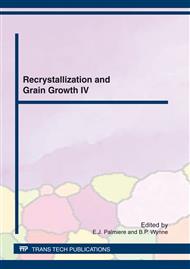p.33
p.41
p.51
p.61
p.62
p.73
p.81
p.89
p.96
Quantitative Analysis of EBSD Data in Rocks and other Crystalline Materials: Investigation of Strain Induced Recrystallisation and Growth of New Phases
Abstract:
Misorientation can be calculated over large datasets and a theme of this paper is the usefulness of examining the results statistically. Comparing the statistics of misorientations calculated from neighbouring pixels (or grains) with those calculated from pairs of pixels (or grains) selected at random helps to indicate deformation and recrystallisation mechanisms. Taking boundary length into account provides a link to grain boundary energy, and boundary length versus misorientation data should be used to examine how boundaries with different misorientations evolve through time. Time lapse misorientation maps indicate how orientation changes through time at particular points in a microstructure during in situ experiments. The size of areas which have changed orientation by particular amounts can be linked to boundary length and boundary migration velocities. When dealing with different phases, the statistics of angular relationships, akin to intraphase misorientation analysis, can indicate orientation relationships in the absence of prior knowledge, which is advantageous in investigating the plethora of minerals that make up the Earth.
Info:
Periodical:
Pages:
62-71
Citation:
Online since:
April 2012
Authors:
Price:
Сopyright:
© 2012 Trans Tech Publications Ltd. All Rights Reserved
Share:
Citation:


